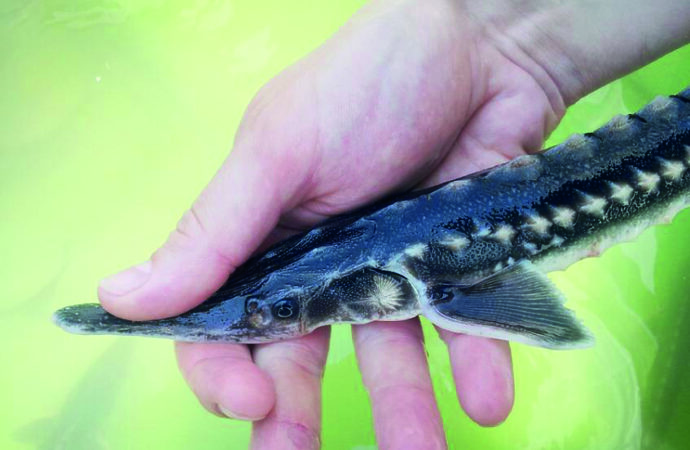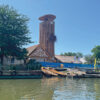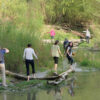Threatened by illegal fishing and caviar trade Sturgeons represent a natural heritage of the Danube River Basin and key indicator species for high ecological quality of rivers. Their dramatic decline in the last decades has become an issue of basin-wide importance that got the attention of the Danube countries and the European Commission. Through the
Threatened by illegal fishing and caviar trade
Sturgeons represent a natural heritage of the Danube River Basin and key indicator species for high ecological quality of rivers. Their dramatic decline in the last decades has become an issue of basin-wide importance that got the attention of the Danube countries and the European Commission. Through the “Danube Sturgeon Task Force”, the ICPDR contributes to actions such as the protection of habitats, the development of migration aids, the breeding of healthy stocks in sheltered facilities, or the struggle against illegal fishing and caviar trade.
The ICPDR has endorsed sturgeons as flagship species. There are six species of sturgeons native in the Danube River Basin, of which the beluga (Huso huso) is the most famous due to its role in caviar trade and its impressive size of up to six metres. To work towards the conservation of the Danube sturgeons, the program STURGEON 2020 was developed to ensure viable populati- ons of sturgeon and other indigenous fish species by 2020. The key measures contained in this program are aimed at habitat protection, restoration of migration routes, supportive stocking programs, economic alternatives to sturgeon fishery, fighting illegal fi shing and the caviar black market, ecological education, the harmonization of legislation and law enforcement. These measures are grouped into six interconnected key topics:
Acquiring political support for sturgeon conservation
■ Capacity building and law enforcement
■ In-situ sturgeon conservation
■ Ex-situ sturgeon conservation
■ Socio-economic measures in support of sturgeon conservation
■ Raising public awareness
The development of the STURGEON 2020 program was pursued through the “Danube Sturgeon Task Force” (DSTF), a network of national and international public entities, NGOs and academic institutions founded in 2012, in which the ICPDR is participating. The aim of the DSTF is to foster synergies of the existing organizations and support the conservation of the highly endangered native sturgeon species in the Danube River Basin and Black Sea by promoting the implementation of the STURGEON 2020 program. The DSTF operates in the frame and with direct support of Priority Area 6 (Biodiversity and Landscape Diversity) of the EU Strategy for the Danube Re-gion, aiming to harmonize the sectoral policies under an integrative approach, balancing the environmental protection with the social and economic requirements at regional level.
ICPDR – Keeper of the Danube The International Commission for the Protection of the Danube River (ICPDR), is located in Vienna and serves 14 countries and the EU. The mission of ICPDR is to promote and coordinate sustainable and equitable water management, including conservation, improvement and rational use of waters for the benefit of the Danube River Basin countries and their people. An important part of this is implementing the Danube River Protection Convention (DRPC), the EU Water Framework Directive and the EU Floods Directive. www.icpdr.org
ICPDR, Vienna



















